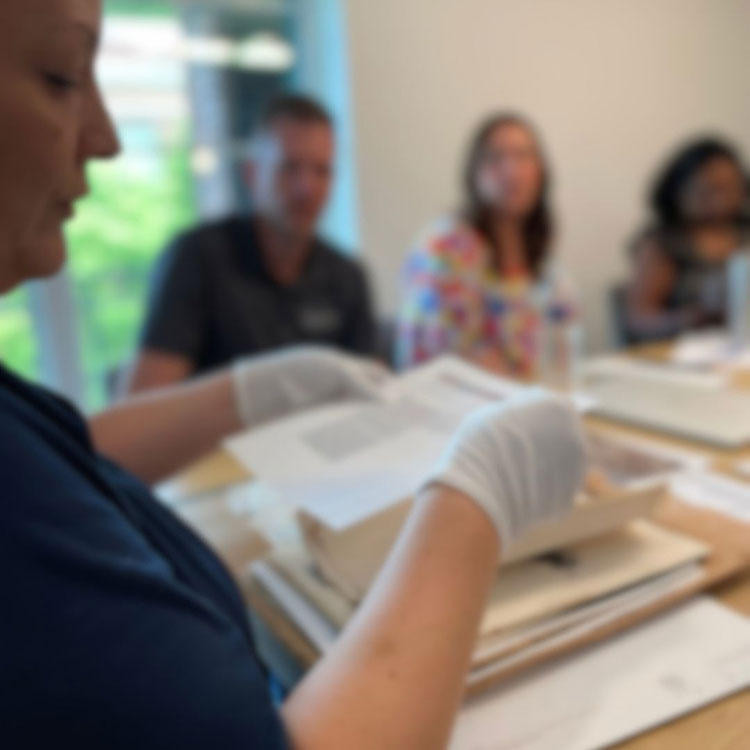
Deep Ellum was born in 1873 when the Texas and Pacific (T&P) Railroad crossed the Houston and Texas Central (H&TC) Railroad near the intersection of Elm Street and Central Avenue. The area came to be called “Deep Ellum,” derived from “Deep Elm,” reflecting its distance from downtown. The pronunciation reflected the dialects of the people who frequented the area. In its early years, Deep Ellum was a place where day laborers were picked up and dropped off, many taken to work in the cottonfields. With the expansion of the railroads came commercial and industrial development and a thriving entertainment sector. Deep Ellum was a crossroads, a nexus, where people interacted in relative freedom. Deep Ellum is still a work in progress, as perhaps it always was.
The State of Texas named Deep Ellum a Cultural District in 2020. In 2023, the Deep Ellum Historic District was listed in the National Register of Historic Places in celebration of Deep Ellum’s 150th anniversary. The Deep Ellum Historic District encompasses the area bounded by the DART Green line to the north, South Hall Street to the south, I-345 to the west, and I-30 to the east.
The blues emerged in the 1890s to express the hardships of newly freed Black Americans. With the growth of the nascent recording industry in the 1920s, blues musicians from around the South flocked to Deep Ellum hoping to be discovered. In Deep Ellum, downhome blues during this period was performed largely by men informally and on the street. The Ella B. Moore Theater on North Central Avenue presented some of the greatest female blues artists of the day.
The emergence of jazz paralleled the growth of blues in Deep Ellum. While early jazz musicians may have come from East Texas, others were from New Orleans and other areas of the African American diaspora in the South.
African American religious music had a profound interaction with the development of blues, jazz, and popular music, from rhythm & blues and rock ‘n’ roll to doo woo, soul, rap, and hip hop. Deep Ellum’s greatest exponents of what has been called “holy blues” were Blind Willie Johnson, Washington Phillips, and Arizona Dranes.
The distinctive sound of Western swing derives from the cross-fertilization of White and Black musical traditions and reflects the influence of popular culture, including Mexican American norteño and Czech and Bohemian polka.
The blues emerged in the 1890s to express the hardships of newly freed Black Americans. With the growth of the nascent recording industry in the 1920s, blues musicians from around the South flocked to Deep Ellum hoping to be discovered. In Deep Ellum, downhome blues during this period was performed largely by men informally and on the street. The Ella B. Moore Theater on North Central Avenue presented some of the greatest female blues artists of the day.
The emergence of jazz paralleled the growth of blues in Deep Ellum. While early jazz musicians may have come from East Texas, others were from New Orleans and other areas of the African American diaspora in the South.
African American religious music had a profound interaction with the development of blues, jazz, and popular music, from rhythm & blues and rock ‘n’ roll to doo woo, soul, rap, and hip hop. Deep Ellum’s greatest exponents of what has been called “holy blues” were Blind Willie Johnson, Washington Phillips, and Arizona Dranes.
The distinctive sound of Western swing derives from the cross-fertilization of White and Black musical traditions and reflects the influence of popular culture, including Mexican American norteño and Czech and Bohemian polka.
The blues emerged in the 1890s to express the hardships of newly freed Black Americans. With the growth of the nascent recording industry in the 1920s, blues musicians from around the South flocked to Deep Ellum hoping to be discovered. In Deep Ellum, downhome blues during this period was performed largely by men informally and on the street. The Ella B. Moore Theater on North Central Avenue presented some of the greatest female blues artists of the day.
The emergence of jazz paralleled the growth of blues in Deep Ellum. While early jazz musicians may have come from East Texas, others were from New Orleans and other areas of the African American diaspora in the South.
African American religious music had a profound interaction with the development of blues, jazz, and popular music, from rhythm & blues and rock ‘n’ roll to doo woo, soul, rap, and hip hop. Deep Ellum’s greatest exponents of what has been called “holy blues” were Blind Willie Johnson, Washington Phillips, and Arizona Dranes.
The distinctive sound of Western swing derives from the cross-fertilization of White and Black musical traditions and reflects the influence of popular culture, including Mexican American norteño and Czech and Bohemian polka.
The blues emerged in the 1890s to express the hardships of newly freed Black Americans. With the growth of the nascent recording industry in the 1920s, blues musicians from around the South flocked to Deep Ellum hoping to be discovered. In Deep Ellum, downhome blues during this period was performed largely by men informally and on the street. The Ella B. Moore Theater on North Central Avenue presented some of the greatest female blues artists of the day.
The emergence of jazz paralleled the growth of blues in Deep Ellum. While early jazz musicians may have come from East Texas, others were from New Orleans and other areas of the African American diaspora in the South.
African American religious music had a profound interaction with the development of blues, jazz, and popular music, from rhythm & blues and rock ‘n’ roll to doo woo, soul, rap, and hip hop. Deep Ellum’s greatest exponents of what has been called “holy blues” were Blind Willie Johnson, Washington Phillips, and Arizona Dranes.
The distinctive sound of Western swing derives from the cross-fertilization of White and Black musical traditions and reflects the influence of popular culture, including Mexican American norteño and Czech and Bohemian polka.

